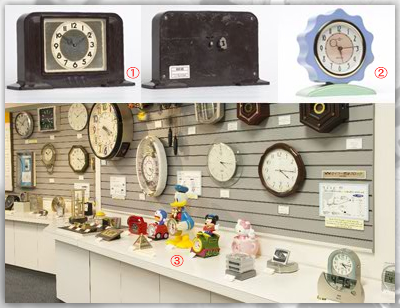Seiko Institute of Horology / Plastic and desk clocks
The Seiko Institute of Horology (now The Seiko Museum) was opened in 1981 as part of a project to commemorate the 100th anniversary of the founding of Seiko. The museum displays research materials related to time and timepieces produced in Japan and other countries around the world. (For more information, see the February 2009 issue of the PR magazine pla-topia.) http://museum.seiko.co.jp/

Thermoplastic resins were first fully utilized starting with the Comet Flower desk clock (photo 2)of 1952. Plastics boast superior design freedom, and they can also be freely colored and therefore, subsequently ABS resin and AS resin came to be used in clock housings and covers(phpto 3). In addition, recently, plastics are also being used in the mechanical bodies, gears and cams, and electrical component insulators of watches and clocks.

